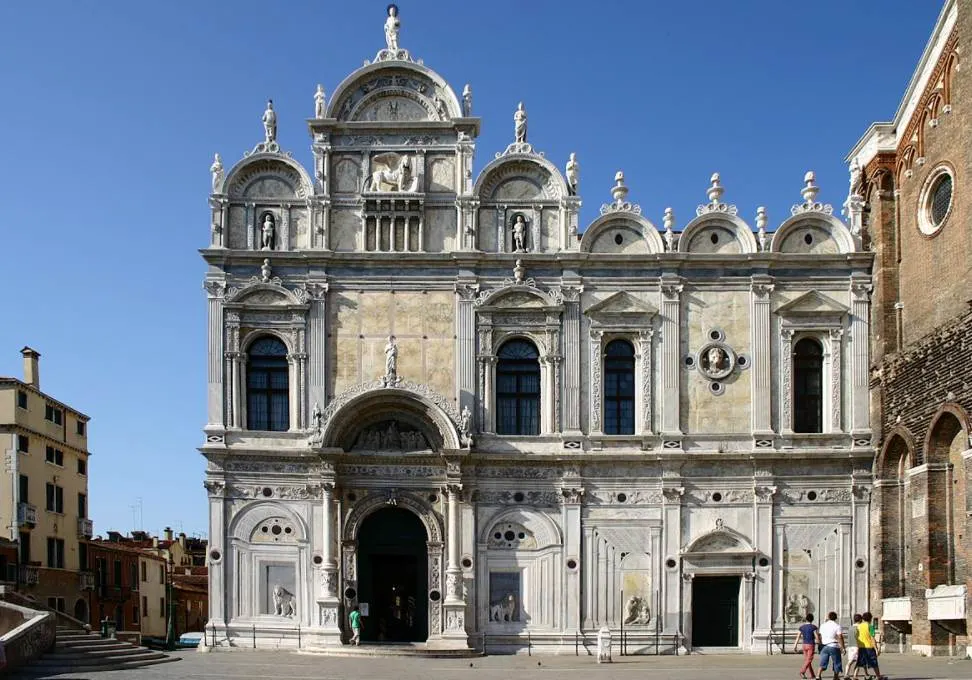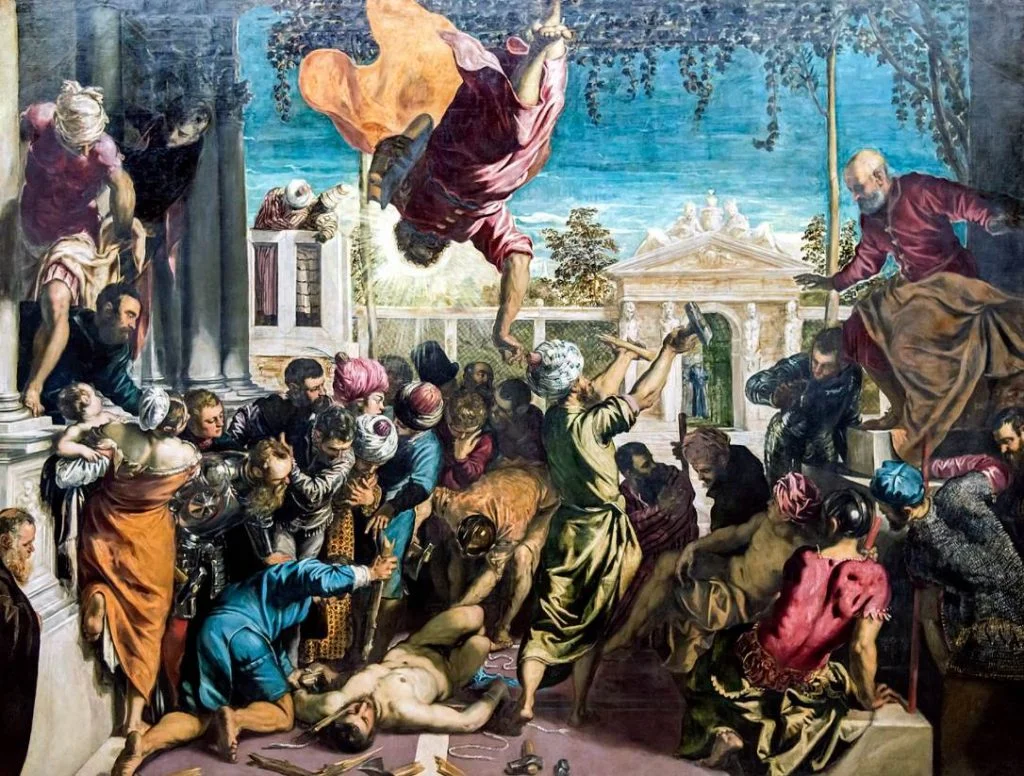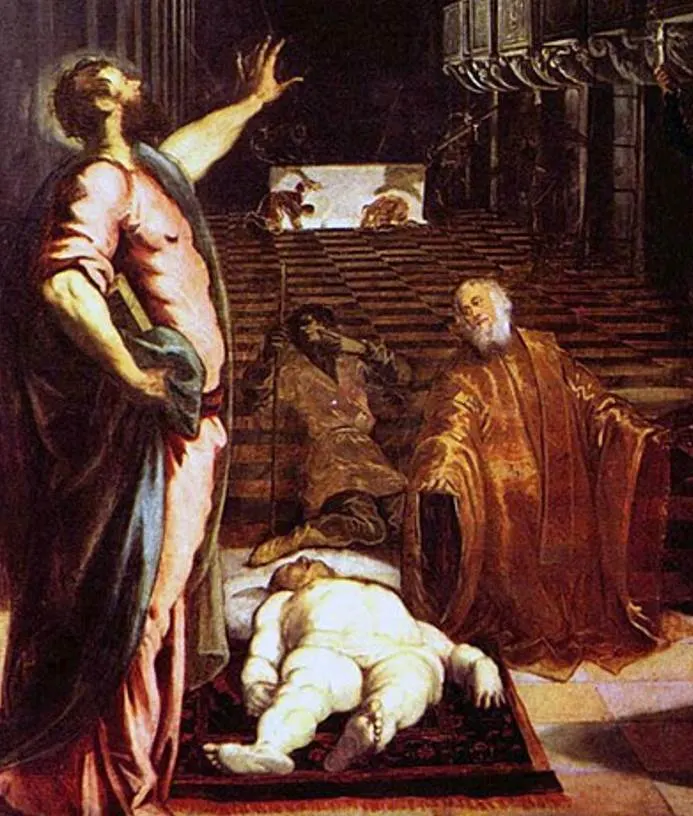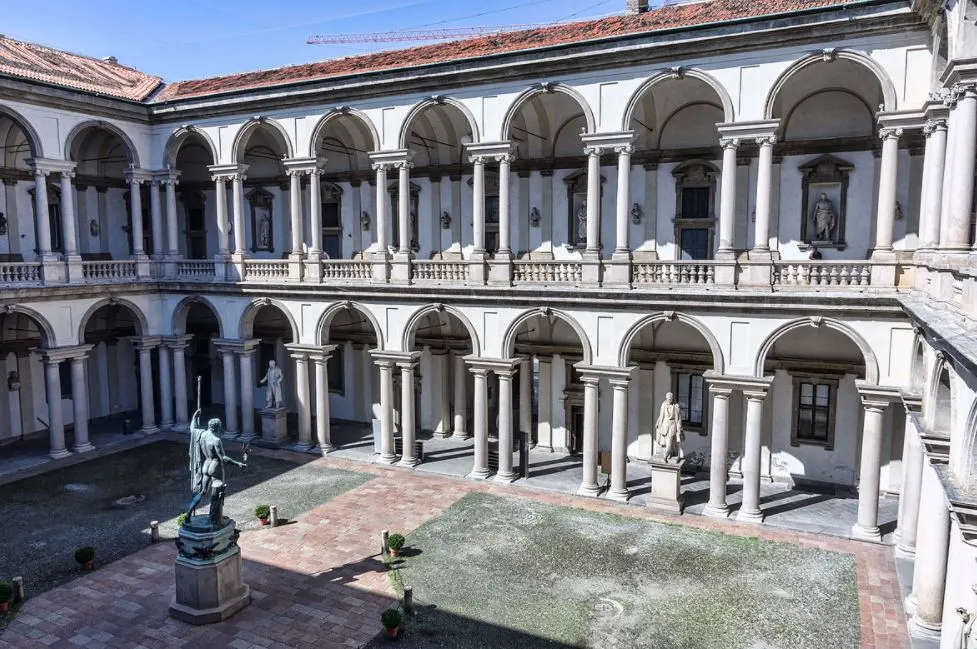When Jacopo Robusti (1518-1594) aspired to become one of the leading Venetian artists of the 16th century, he had to use some remarkable marketing tactics to make his way.
Not only did “Tintoretto” paint at a speed that was unseen before, but he also offered to paint for free or at very low cost during the initial phase of his career.
His persistence, work ethic, and talent eventually earned him plenty of commissions, including a remarkable series of three paintings that he completed in the 1560s.
In this article, you’ll discover some of the most interesting facts about the Finding of the Body of Saint Mark, one of Tintoretto’s masterpieces.
1. The painting was completed during the 1560s
Tintoretto earned his nickname as a little boy because he was the son of a Venetian dyer. It translates to “Little Dyer” and the name somehow stuck.
The other nickname he was given during his long career was “Il Furioso” or “The Furious.” This was a reference to the incredible pace at which he painted.
Not much is known about his initial training except for a mention that he was once a pupil at the studio of Titian, the other famous Venetian artist.
This presumably only lasted a few days because the two didn’t get along. Tintoretto managed to scrape by and carve a successful carer in his native city.
He completed the Finding of the Body of Saint Mark somewhen between 1562 and 1566, a time when he was already a renowned artist in Venice.


The title of the painting suggests that it depicts Saint Mark, the patron saint of Venice who is traditionally considered to be the author of the Gospel of Mark.
Saint Mark is actually depicted twice. He is the figure with the halo around his head on the left side of the painting and stands in front of his dead body.
The scene takes place inside a crypt with tombs. People are removing the corpses from the coffins and the saint orders them to stop because his body has been found.
His remains were later moved from this crypt in Alexandria, Egypt to Venice and are now held in Saint Mark’s Basilica, one of Venice’s most famous landmarks.

3. It was commissioned to decorate the building of a Venetian confraternity
The painting was commissioned by a man named Tommaso Rangone (1493-1577), an influential figure in Venice who was a scholar and patron of the arts.
He was also the so-called “Grand Guardian” of the Scuola Grande di San Marco, or the 6 main confraternities in the city at the time.
The building for which it was commissioned was constructed between 1485 and 1505 and is arguably one of the most stunning structures in the city.
It became an Austrian military hospital during the time that Venice was part of the Austrian Kingdom and today, it serves as a civil hospital that faces the Campo Santi Giovanni e Paolo.

4. Tintoretto painted one of his first major works for the confraternity
The painting was quite special for Tintoretto because he earned his first major commission from the Scuola Grande di San Marco in 1548.
This was a time when he was still struggling to become a respected artist in Venice and the painting titled “Miracle of the Slave” helped him a lot in that sense.
This work depicts another miracle in which a slave is saved by the Evangelist to whom he showed devotion. The torture devices put on him were miraculously removed.
The Mannerist painting was an instant success and it allowed him to establish himself as one of the leading painters in Venice and earn a lot more commissions in the process.

5. The man who commissioned the painting is depicted in it
Tintoretto either painted the other figures in the work as being surprised by the apparition of Saint Mark or being oblivious to it.
One of the most notable figures is the elderly man who is kneeling in front of the saint. This is a portrait of Tommaso Rangone, the man who commissioned the work.
Another remarkable fact about the Finding of the Body of Saint Mark is that it appears to be unfinished in some spots. You can literally see the tiles through Rangone’s clothes.

6. The work was part of a series of 3 paintings he completed at the time
The confraternity was clearly impressed by his initial work called Miracle of the Slave because it was followed by the commission of a series of paintings related to Saint Mark.
The Finding of the Body of Saint Mark was followed by a work titled Saint Mark’s Body Brought to Venice, the follow-up painting of the events.

The third painting is another work depicting a miracle by Saint Mark titled Saint Mark Rescuing a Saracen from Shipwreck.
This painting depicts Saint Mark in the top right corner as he hauls up a Saracen from the small rocky boat that he was sitting in.

7. How big is the Finding of the Body of Saint Mark by Tintoretto?
The artist developed a reputation for being able to produce huge works of art at a minimal cost, so you will hardly find any small paintings in his oeuvre.
The Finding of Saint Mark is a monumental oil on canvas painting that has dimensions of 405 × 405 centimeters (159 × 159 inches).
8. Where is the painting located today?
The two other paintings in this series, as well as Miracle of the Slave, are still in Venice as they are part of the collection of the Gallerie dell’Accademia in the city.
The Finding of the Body of Saint Mark is located in another major city in northern Italy as it’s part of the collection of the Pinacoteca di Brera in Milan.

